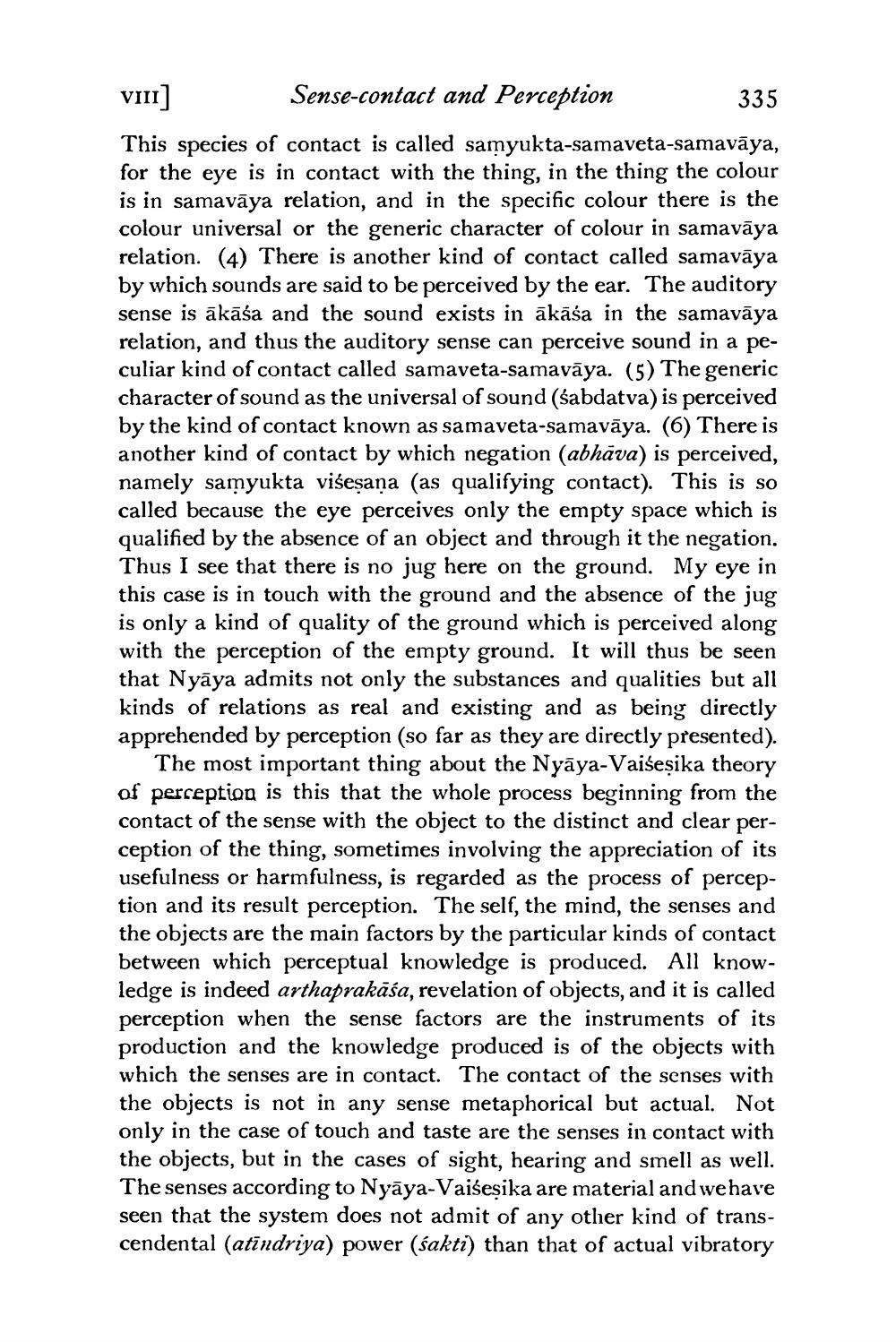________________
VIII]
Sense-contact and Perception
This species of contact is called samyukta-samaveta-samavāya, for the eye is in contact with the thing, in the thing the colour is in samavāya relation, and in the specific colour there is the colour universal or the generic character of colour in samavāya relation. (4) There is another kind of contact called samavāya by which sounds are said to be perceived by the ear. The auditory sense is ākāśa and the sound exists in ākāśa in the samavāya relation, and thus the auditory sense can perceive sound in a peculiar kind of contact called samaveta-samavaya. (5) The generic character of sound as the universal of sound (sabdatva) is perceived by the kind of contact known as samaveta-samavāya. (6) There is another kind of contact by which negation (abhava) is perceived, namely samyukta višeṣaṇa (as qualifying contact). This is so called because the eye perceives only the empty space which is qualified by the absence of an object and through it the negation. Thus I see that there is no jug here on the ground. My eye in this case is in touch with the ground and the absence of the jug is only a kind of quality of the ground which is perceived along with the perception of the empty ground. It will thus be seen that Nyaya admits not only the substances and qualities but all kinds of relations as real and existing and as being directly apprehended by perception (so far as they are directly presented).
The most important thing about the Nyaya-Vaiseṣika theory of perception is this that the whole process beginning from the contact of the sense with the object to the distinct and clear perception of the thing, sometimes involving the appreciation of its usefulness or harmfulness, is regarded as the process of perception and its result perception. The self, the mind, the senses and the objects are the main factors by the particular kinds of contact between which perceptual knowledge is produced. All knowledge is indeed arthaprakāśa, revelation of objects, and it is called perception when the sense factors are the instruments of its production and the knowledge produced is of the objects with which the senses are in contact. The contact of the senses with the objects is not in any sense metaphorical but actual. Not only in the case of touch and taste are the senses in contact with the objects, but in the cases of sight, hearing and smell as well. The senses according to Nyāya-Vaiseṣika are material and we have seen that the system does not admit of any other kind of transcendental (atīndriya) power (śakti) than that of actual vibratory
335




